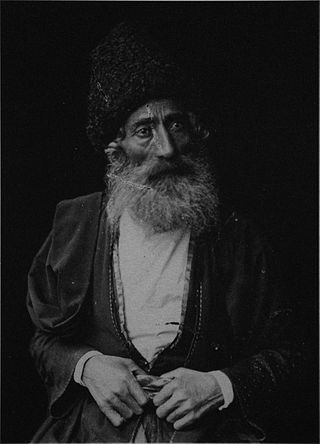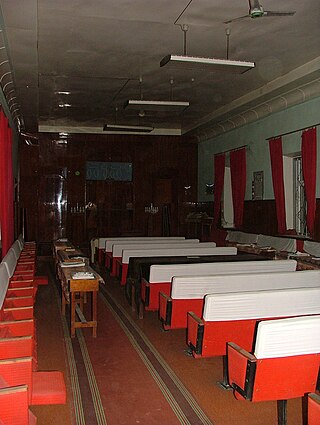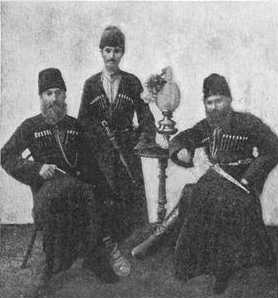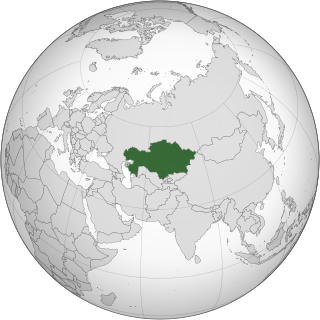
The Demographics of Tajikistan is about the demography of the population of Tajikistan, including population growth, population density, ethnicity, education level, health, economic status, religious affiliations, and other aspects of the population.

The history of the Jews in Russia and areas historically connected with it goes back at least 1,500 years. Jews in Russia have historically constituted a large religious and ethnic diaspora; the Russian Empire at one time hosted the largest population of Jews in the world. Within these territories, the primarily Ashkenazi Jewish communities of many different areas flourished and developed many of modern Judaism's most distinctive theological and cultural traditions, while also facing periods of antisemitic discriminatory policies and persecution, including violent pogroms. Some have described a "renaissance" in the Jewish community inside Russia since the beginning of the 21st century; however, the Russian Jewish population has experienced precipitous decline since the dissolution of the USSR which continues to this day, although it is still among the largest in Europe.

The Georgian Jews are a community of Jews who migrated to Georgia during the Babylonian captivity in the 6th century BCE. It is one of the oldest communities in the region. They are also widely distinguished from the Ashkenazi Jews in Georgia, who arrived following the Russian annexation of Georgia.

The history of the Jews in the Soviet Union is inextricably linked to much earlier expansionist policies of the Russian Empire conquering and ruling the eastern half of the European continent already before the Bolshevik Revolution of 1917. "For two centuries – wrote Zvi Gitelman – millions of Jews had lived under one entity, the Russian Empire and [its successor state] the USSR. They had now come under the jurisdiction of fifteen states, some of which had never existed and others that had passed out of existence in 1939." Before the revolutions of 1989 which resulted in the end of communist rule in Central and Eastern Europe, a number of these now sovereign countries constituted the component republics of the Soviet Union.

Bukharan Jews, in modern times also called Bukharian Jews, are an ethnoreligious Jewish sub-group of Central Asia that historically spoke Bukharian, a Judeo-Tajik dialect of the Tajik language, in turn a variety of the Persian language. Their name comes from the former Central Asian Emirate of Bukhara, which once had a sizable Jewish population. Bukharan Jews comprise Persian-speaking Jewry along with the Jews of Iran, Afghanistan, and the Caucasus Mountains. Bukharan Jews are Mizrahi Jews, like Persian, Afghan and Mountain Jews.
Jewish ethnic divisions refer to many distinctive communities within the world's ethnically Jewish population. Although considered a self-identifying ethnicity, there are distinct ethnic subdivisions among Jews, most of which are primarily the result of geographic branching from an originating Israelite population, mixing with local communities, and subsequent independent evolutions.

Bukharian is a Judeo-Persian dialect historically spoken by the Bukharan Jews of Central Asia. It is a Jewish dialect derived from —and largely mutually intelligible with— the Tajik branch of the Persian language.

The Dushanbe Synagogue, also known as the Bukharian Synagogue, located in Dushanbe, the capital of Tajikistan, was constructed in the 19th century in one of the two Jewish Quarters in Dushanbe at the time. It was part of the Jewish community compound, which also included ritual buildings and a school. In February 2006, the Government of Tajikistan began demolition of the Jewish community compound as part of an urban redevelopment plan designed to make way for a new presidential residence, the Palace of the Nation, with adjoining landscaped areas. The demolition of the synagogue was delayed due to international protests and a series of court actions until the end of June 2008, when the old building was finally razed.

Ohr Avner Foundation is a philanthropic foundation that was established in 1992 by the Israeli billionaire and émigré from the former Soviet Union, Lev Leviev and is managed by its Director Rabbi David Mondshine. The foundation was named in memory of Lev Leviev's father Rabbi Avner Leviev. It supports a large network of Jewish educational institutions in the former Soviet Union, such as Jewish day schools, kindergartens and youth camps, a resource center and a teachers training institute.

The history of the Jews in Uzbekistan refers to the history of two distinct communities; the more religious and traditional Bukharan Jewish community and the Ashkenazi community.

The history of the Jews in Azerbaijan dates back many centuries. Today, Jews in Azerbaijan mainly consist of three distinct groups: Mountain Jews, the most sizable and most ancient group; Ashkenazi Jews, who settled in the area during the late 19th-early 20th centuries, and during World War II; and Georgian Jews who settled mainly in Baku during the early part of the 20th century.

The history of the Jews in Kazakhstan connects back to the history of Bukharan and Juhuro Mountain Jews. Kazakh Jews have a long history. There are approximately several thousand Jews in Kazakhstan right at present.

The history of the Jews in Abkhazia dates back to the early 19th century. The Jewish population of Abkhazia consisted of Ashkenazi, Georgian and other Jews. It grew after the incorporation of Abkhazia into the Russian Empire in the middle of the 19th century. Most of the Jews left or were evacuated from Abkhazia as a result of the Georgian-Abkhazian conflict of 1992–1993.

Islam is the predominant religion in Tajikistan.

The history of the Jews in South Ossetia is connected to the history of the Jews in Georgia. Much of the early Jewish history in South Ossetia is similar to that of other Jewish communities in the Georgian region. At the same time, the South Ossetian capital, Tskhinvali was known for its sizable Georgian Jewish population, where the community had its own quarter.

The history of the Jews in Zimbabwe reaches back over one century. Present-day Zimbabwe was formerly known as Southern Rhodesia and later as Rhodesia.
The history of the Jews in Kyrgyzstan is linked directly to the history of the Bukharian Jews of Uzbekistan. Until the 20th century, most Jews living in the Kyrgyz areas were of the Bukharian Jewish community. However, during the 20th century, large amounts of European Jews began to emigrate to Kyrgyzstan which was then part of the Soviet Union, and a small amount of them still live in the country.
The history of the Jews in Central Asia dates back centuries, where Jews have lived in countries which include Kyrgyzstan, Kazakhstan, Tajikistan, Turkmenistan, and Uzbekistan.

The Palace of the Nation is the official residence of the President of Tajikistan. It is located on Shirinshoh Shohtemur Street in central Dushanbe. The Presidential Palace is surrounded by Dushanbe Flagpole to the north, Rudaki Park to the east, Independence Monument to the south and Varzob River to the west.

Bukharan Jews in Israel, also known as the Bukharim, refers to immigrants and descendants of the immigrants of the Bukharan Jewish communities, who now reside within the state of Israel.

















